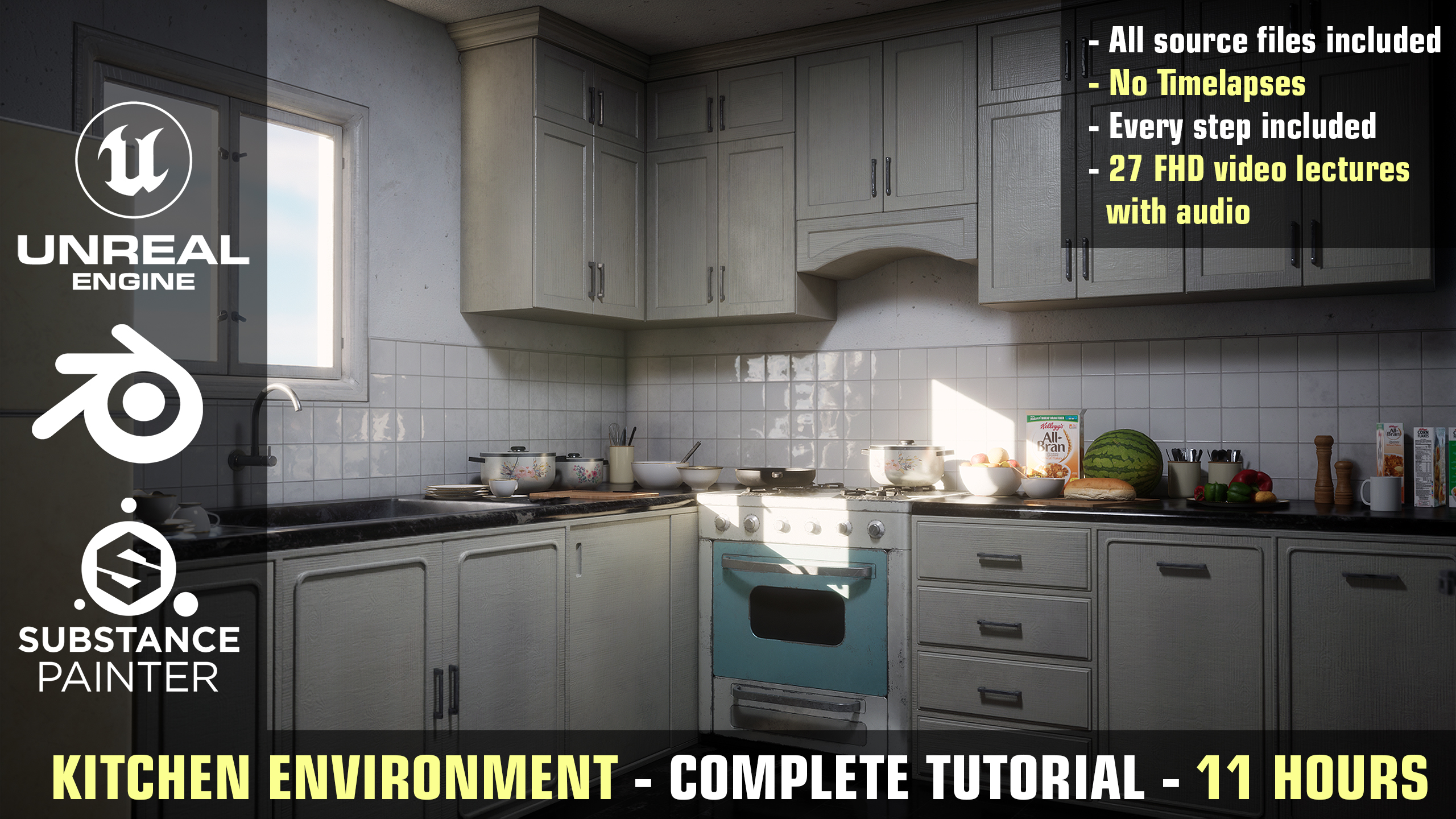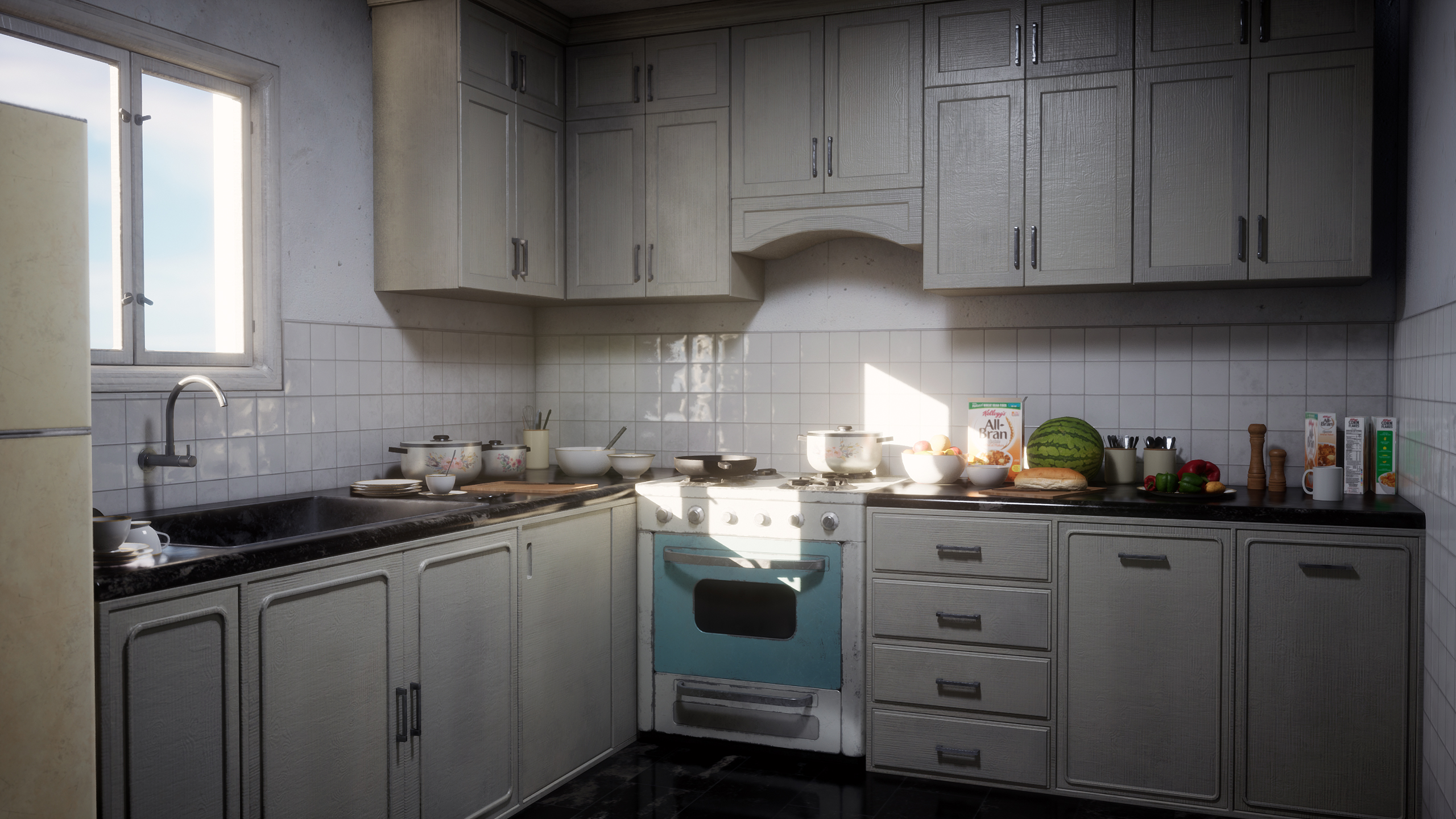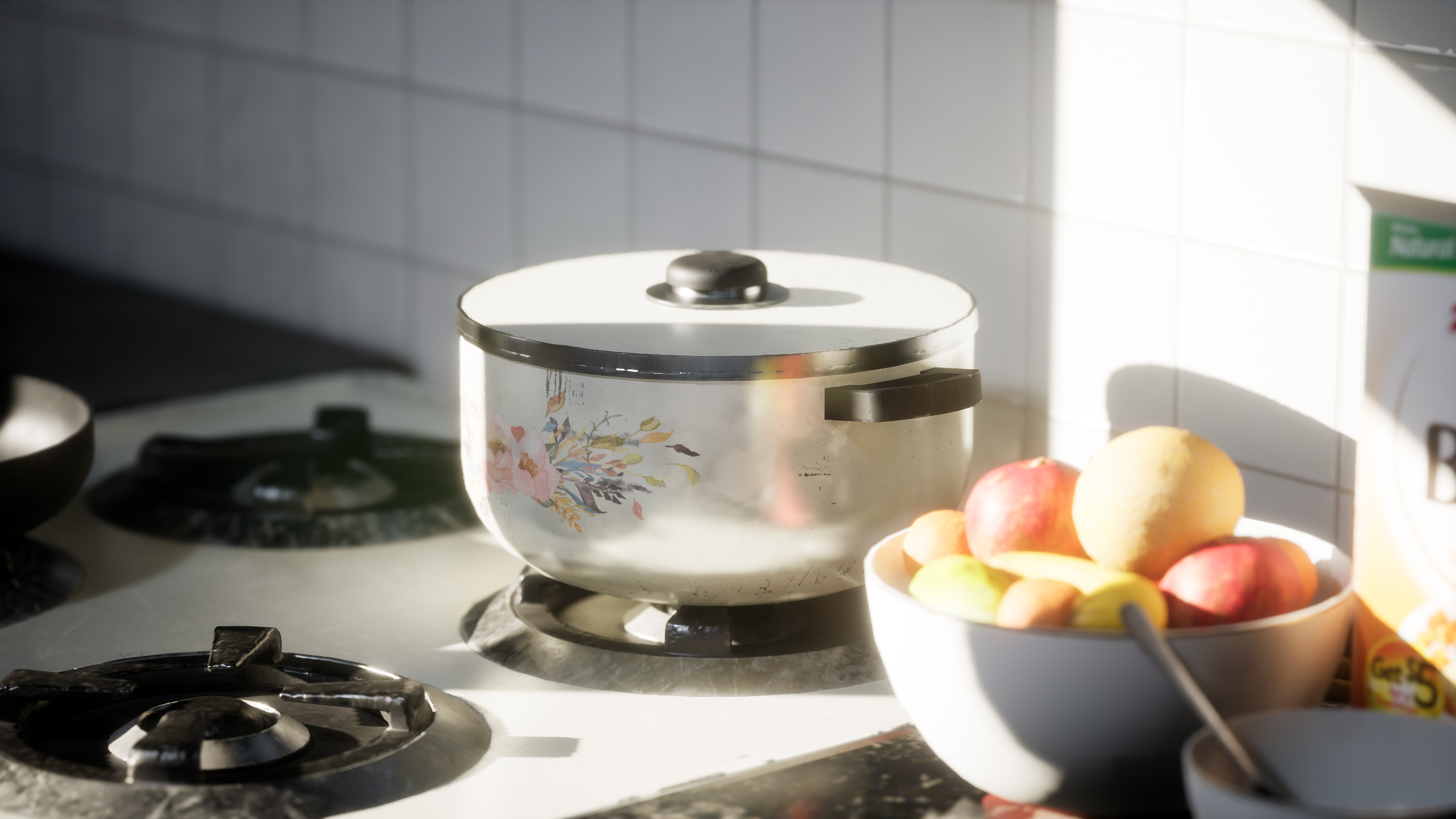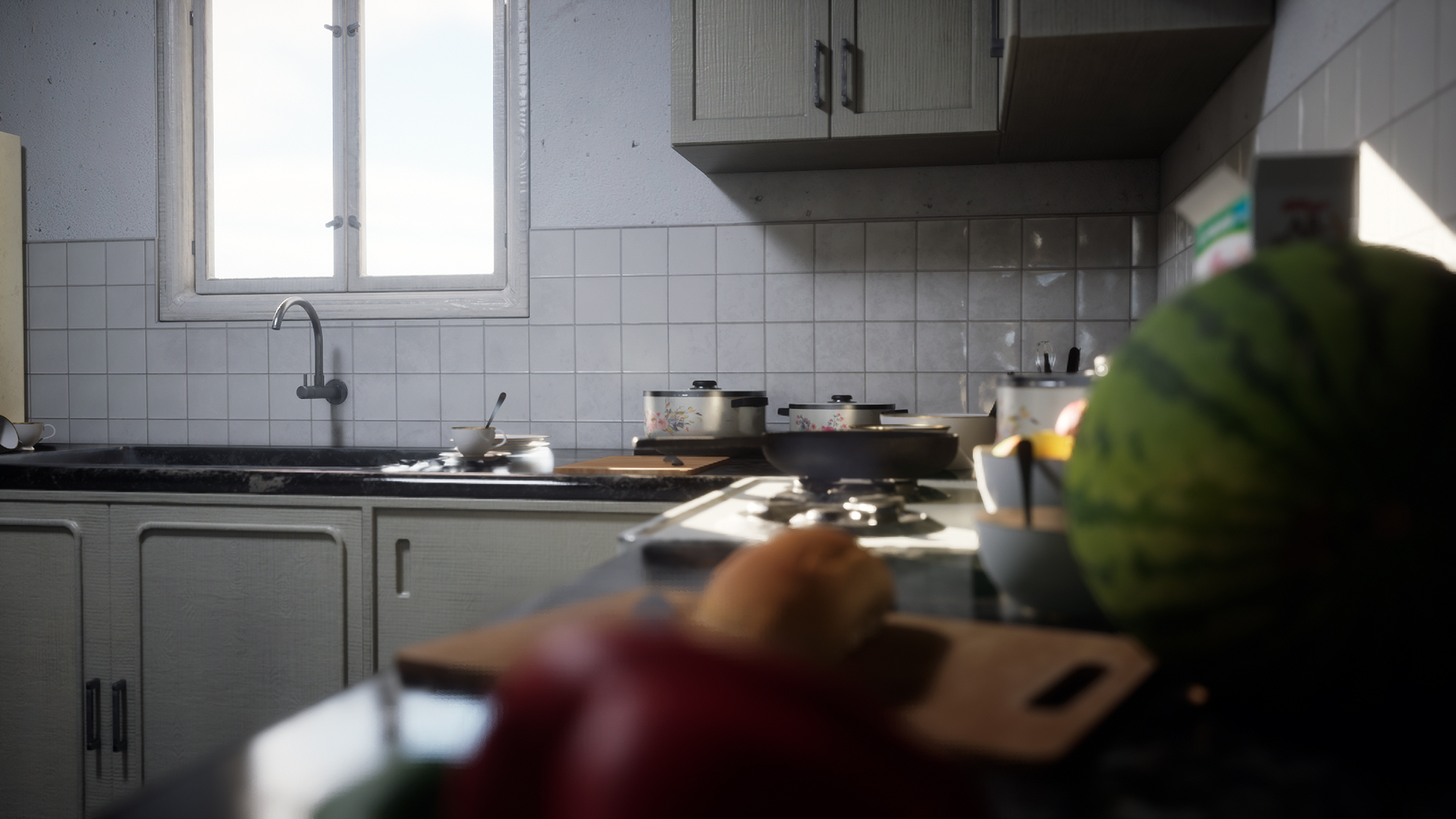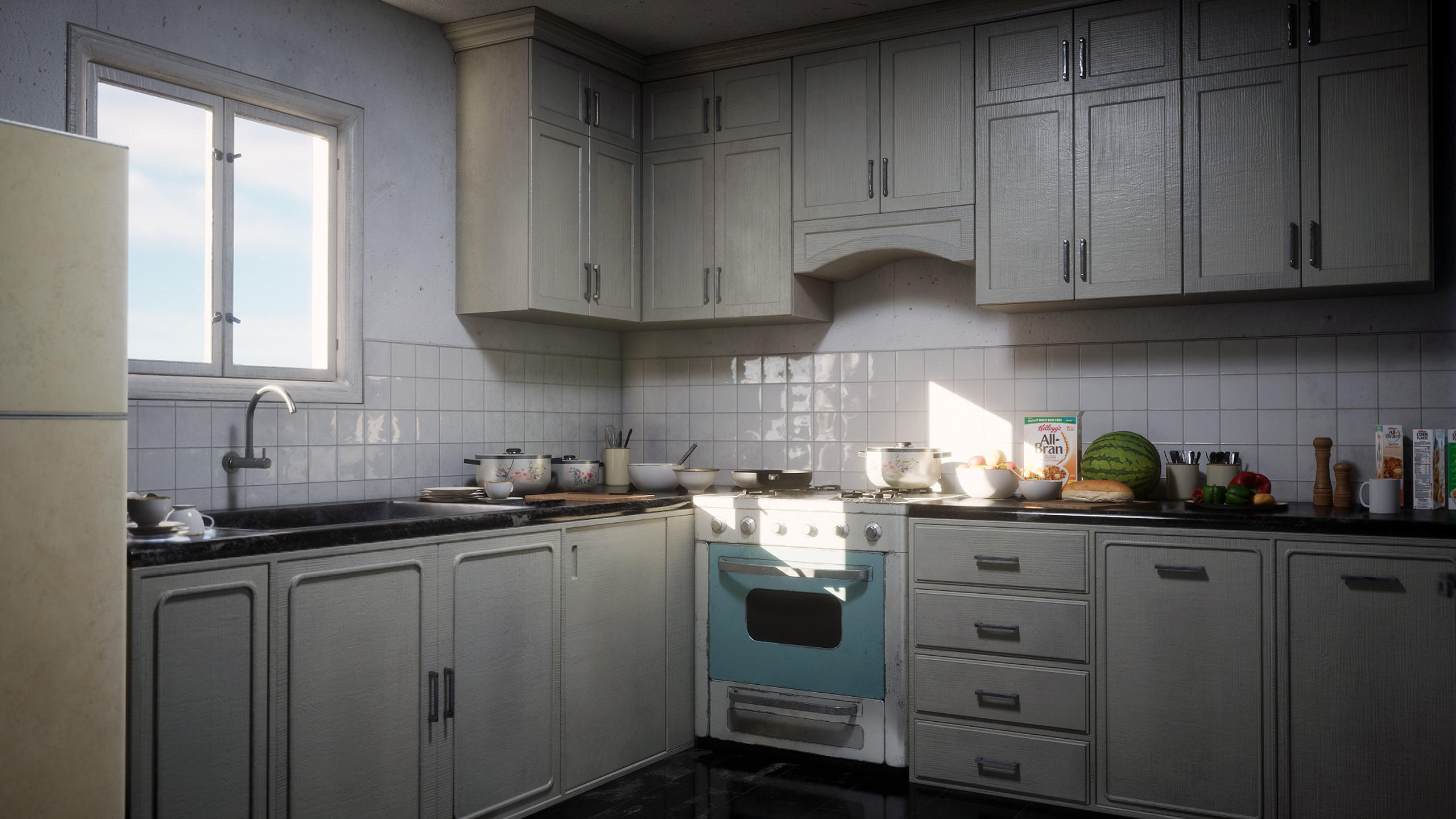Creating A Kitchen Environment In Unreal Engine 5
Hello Everyone and welcome to this new course. In this course, we will go over the entire process of creating a Kitchen Environment using Unreal Engine 5, Blender, Substance Painter.
We will go over modelling in Blender, texturing using Substance Painter and setting up the scene, lighting and materials in Unreal Engine 5.
You will get:
1. 27 Full HD video lectures with over 11 hours of content and AUDIO commentary.
2. All the files related to the course including .blend files, unreal project files, substance files, reference images, textures etc.
SOFTWARES USED - (BLENDER, Substance Painter, Unreal Engine 5):
All the modelling will be done in Blender, However, the techniques used are universal and can be replicated in any other 3D modelling package. The materials and textures will be created using Substance Painter. Level art, lighting and composition will be done in Unreal Engine 5.
In this course, you will learn everything you need to know to create the final results that you see in the images and trailers. The same techniques can be applied to almost any type of environment.
This course has over 11 hours of content! (All the videos have audio commentary)
We will go over each and every step in this course together and nothing will be skipped. The course does not have any kind of timelapses so that you can follow every step easily.
We will start by gathering some reference images to gain some initial ideas and the mood for our scene. We will arrange these reference images in a free program called PureRef. After this we will move on to Blender and start modelling our main assets. We will go over the entire process of modelling this from start to finish in Blender only. We will start by modelling some of our main assets such as the stove, fridge, and the cabinets.
After we have modeled all our assets, we will export them to Substance Painter to start the texturing process. We will learn to create high quality and realistic materials and the key features of Substance Painter like Smart Masks, generators, smart materials etc.
After this we will import all our models into Unreal Engine and export the textures from Painter to Unreal Engine. The next step would be to setup our lighting and create a mood and atmosphere for our scene. We will make use of the new features of Unreal Engine such as Lumen to get realistic lighting for our scene, next we will set up a post-Processing volume to further enhance the visuals of our scene.
Then we will spend some more time creating a lot of small props for our scene to further detail the scene even more. We will end this course by adding some food items from Quixel Megascans, setting up different camera angles and taking high resolution screenshots for our portfolio.
So, I hope to see you there in the course, thank you.
Who is this course for?
Students that have basic knowledge of modelling, texturing and want to learn how to create environments. Everything in this course would be explained in detailed but some prior knowledge of the software would be helpful.
Discover more products like this
kitchen loveblender spring23 3d environment blender 3d kitchen 3d model blender 3d-texture bfcm22 summer23 3d-modelling blender to unreal 3d environment asset for blender 3d-Asset 3D blender learning environment assets for blender blender 2.9 tutorial blender kitchen models Substance painter summer22 3d modeling tutorial blender environment Unreal Engine #madewithsubstance 3d animation bfcm23 game asset modeling
